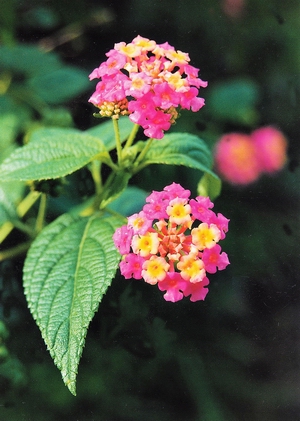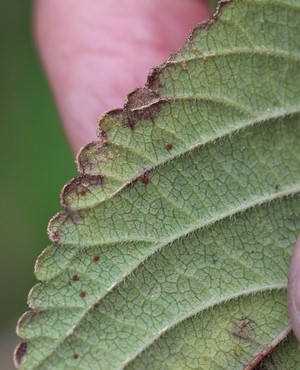Rust fungus proving value in battle against lantana
4 Oct 2017
A rust fungus introduced to New Zealand two years ago to wage biological war against ‘Lantana camara’ is starting to have a noticeable impact on the pest plant in Northland.
Entomologist Jenny Dymock says the Environmental Protection Authority (EPA) approved the release of two rust fungi – Puccinia lantanae and Prospodium tuberculatum – to control lantana in April 2012, with both subsequently released in Northland in 2015.
Cable Bay-based Dr Dymock, who works with the Northland Regional Council (NRC), says the fungi were released in the Whangaroa, Doubtless Bay, Awanui and Kohukohu areas in autumn two years ago.
The rusts work by reducing the growth rate and fruit and leaf production of lantana plants, one of the world’s most invasive weeds.
While Puccinia lantanae (a blister rust) did not appear to have established itself in Northland yet, in contrast the leaf rust Prospodium tuberculatum was beginning to have a big impact on local lantana populations, as evidenced by the number of lantana with dead and dying branches.
 A file shot of a healthy lantana plant.
A file shot of a healthy lantana plant.
Lantana is a serious problem in Northland, where it forms dense thickets that invade a wide variety of areas from native and exotic forests to domestic gardens, roadsides, sand dunes, quarries and wasteland.
Typically a low, scrambling shrub with small, colourful flowers, lantana can be poisonous to people and grazing stock. It has thorny stems, strong-smelling leaves, especially if they’re crushed, and produces fruit that’s attractive to birds, which then spread its seeds to uninfested sites.
Dr Dymock says the NRC was behind the original application to the EPA to import the rusts, part of a growing number of host-specific weapons in the council’s biocontrol arsenal.
She says it’s great to see the rust – a native of Brazil – making a noticeable dent in the local lantana population. Surprisingly, in Northland it appears to be damaging lantana especially well during late winter, something Dr Dymock attributes to the wetter conditions.
“Many people will be unaware that we have a range of more than two dozen biological control agents already in use in Northland, with even more likely to be available in the future.”
Biological control is the use of naturally-occurring enemies and diseases to control pests and weeds. A cost-effective and environmentally-friendly method of pest control, it’s not designed to eradicate a species; instead it aims to keep populations at low levels.
 The small brown spots on this lantana leaf are a host-specific fungus now starting to impact on the unwanted pest plant in the region.
The small brown spots on this lantana leaf are a host-specific fungus now starting to impact on the unwanted pest plant in the region.
Dr Dymock says as well as fungi and bacteria, other biological control tools include an army of insects – including some which target other insects – and even tiny internal parasites.
However, she says the process from lowly insect or fungus to biological control agent is a painstaking, lengthy and initially costly one.
“The NRC typically spends at least $80,000 a year on biological control work and is part of a national group that collectively spends more than $600,000 on this annually.”
She says the first step in finding biocontrol agents is a survey of the natural enemies of the target weed or pest either here in New Zealand and/or overseas.
If no natural enemies of a target weed or pest are found in New Zealand then potentially suitable overseas candidates from areas with a climate matching Northland’s must be extensively tested in a secure quarantine facility to determine whether they will attack any native New Zealand species or any species that is of economic value.
“Only when researchers are confident the potential biocontrol agent attacks just the target species alone, an application for release from quarantine is made to the EPA, followed by consultation with the public and stakeholders.”
Dr Dymock says it can take years from when an initial hunt for a biological control agent begins to when approval for its release is finally given.
